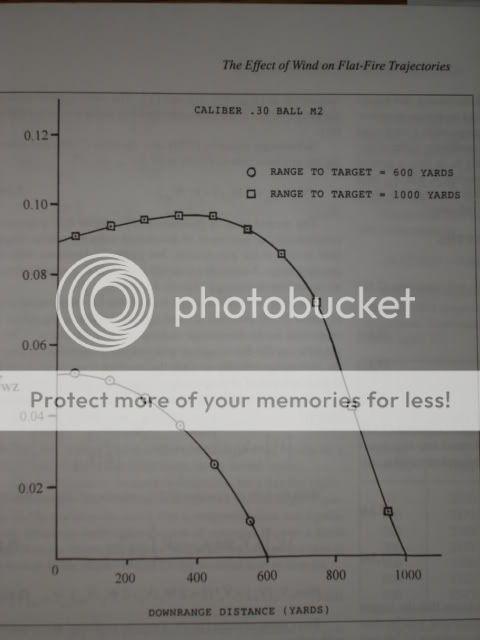At that distance and beyond the wind at the shooters location is not the most important.QUOTE]
This seems off topic to me and also very wrong.
Near wind is by far the largest deflecting contributor to error seen further down range.
Truly, wind vectors beyond 800yds might as well be ignored completely, as there is far less bullet lag generated at that point(lower lag rate), and deflection set by near wind will already have influenced the outcome to a much greater extent.
For example, if near wind sets a path causing 2ft of down range error, no realistic amount of a countering far wind vector at 800yds+ could overcome this.
The greatest deflection follows the greatest lag rate and that is always nearest the muzzle(greatest decreasing velocity RATE). This is the point of highest drag/lowest gyroscopic stability.
Hell, you can almost reach out & feel wind that matters most (which is fortunate).
But as said, this is off topic from scopes.
It's not off topic. Study this graph. It's from "Modern Exterior Ballistics" by Robert McCoy of the Aberdeen Ballistics Research lab (BRL)
The graph clearly shows that the wind about 30-50% of the distance downrange is more important than that at the shooters location for the longer range shot in this example. The bullet, it's velocity, and the air density all affect the scale of the curve but not the general effect. It's not difficult to make a similar chart for your ammo and shooting conditions using a ballistics program. If you do you'll find some of your statements above are simply wrong. And that's assuming a uniform wind over the path. Certainly you can have conditions where there is higher velocity wind downrange or even wind in an entirely different direction.
Wind at other than at the shooters location often gets ignored because few shooters have a clue how to estimate downrange wind in the field. That was the point I've been trying to make. Most shooters would spend their money better on range time and practice ammo learning to dope wind than by buying a new scope. Denying the problem doesn't make it go away.

